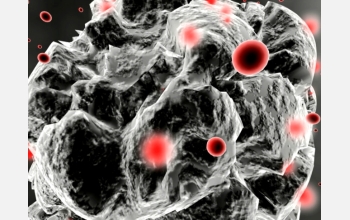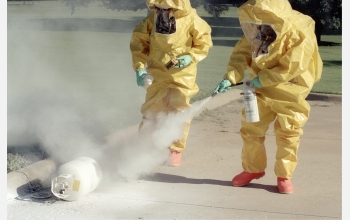|

All Images

Discovery
Nano-engineered Powders Tackle Toxic Chemicals

Back to article | Note about images
 |
 View video View video
This video shows how the FAST-ACT powders work, how they are made and how they are used in situations ranging from chemical spills to gas releases in enclosed chambers.
Credit: Cliff Braverman and Trent Schindler, NSF; NanoScale Materials, Inc.; Kansas State University
|
 |
Artist's interpretation of FAST-ACT absorbing and destroying toxins
Credit: Trent Schindler, NSF |
Download the high-resolution JPG version of the image. (257 KB)
|
Use your mouse to right-click (or Ctrl-click on a Mac) the link above and choose the option that will save the file or target to your computer.
|
 |
Emergency response personnel from the Topeka, Kan., fire department test FAST-ACT to determine its ability to suppress vapors from a leaking propane tank.
Credit: NanoScale Materials, Inc.; NSF; Image use prohibited without approval from NanoScale. |
Download the high-resolution JPG version of the image. (4.5 MB)
|
Use your mouse to right-click (or Ctrl-click on a Mac) the link above and choose the option that will save the file or target to your computer.
|
 |
Manhattan, Kansas, emergency responder preparing to demonstrate effective use of FAST-ACT canister on a liquid spill.
Credit: NanoScale Materials, Inc.; Manhattan Department of Fire Services; Image use prohibited without approval from NanoScale. |
Download the high-resolution JPG version of the image. (212 KB)
|
Use your mouse to right-click (or Ctrl-click on a Mac) the link above and choose the option that will save the file or target to your computer.
|
 |
FAST-ACT developer Ken Klabunde holds a canister of the powder he developed in his Kansas State University laboratory.
Credit: Kansas State University |
Download the high-resolution JPG version of the image. (229 KB)
|
Use your mouse to right-click (or Ctrl-click on a Mac) the link above and choose the option that will save the file or target to your computer.
|
|







